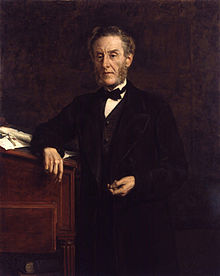Involuntary commitment
This form of training has now spread to a number of other countries (Canada, Finland, Hong Kong, Ireland, Singapore, Scotland, England, Wales, and the United States).[10] Mental health triage may be used in an emergency room to make a determination about potential risk and apply treatment protocols.In an attempt to avoid these confounding factors, researchers have tried comparing the rates of violence amongst people diagnosed with schizophrenia to their siblings in a similar manner to twin studies.Because the shift was typically not accompanied by a commensurate development of community-based services, critics say that deinstitutionalization has led to large numbers of people who would once have been inpatients as instead being incarcerated or becoming homeless.Édouard Séguin developed a systematic approach for training individuals with mental deficiencies,[19] and, in 1839, he opened the first school for intellectually disabled people.Parliamentary Committees were established to investigate abuses at private madhouses like Bethlem Hospital - its officers were eventually dismissed and national attention was focused on the routine use of bars, chains and handcuffs and the filthy conditions in which the inmates lived.[21] The commission consisted of eleven Metropolitan Commissioners who were required to carry out the provisions of the Act;[22][full citation needed] the compulsory construction of asylums in every county, with regular inspections on behalf of the Home Secretary.The Supreme Court case O'Connor v. Donaldson established that the mere presence of mental illness and the necessity for treatment are not sufficient by themselves to justify involuntary commitment, if the patient is capable of surviving in freedom and does not present a danger of harm to themselves or others.In 1987–88, a homeless woman named Joyce Brown worked with the New York Civil Liberties Union to challenge her forced hospitalization under new Mayor Ed Koch's administration program.The trial, which attracted significant media attention, ended in her favor, and while the city won on appeal she was ultimately released after a subsequent case determined she could not be forcibly medicated.In the United States, Kansas v. Hendricks established the procedures for a long-term or indefinite form of commitment applicable to people convicted of some sexual offences.[38] Charles Dickens was an outspoken and high-profile early critic, and several of his novels, in particular Oliver Twist and Hard Times demonstrate his insight into the damage that institutions can do to human beings.[46] In 1887, investigative journalist Nellie Bly went undercover at an asylum in New York City to expose the terrible conditions that mental patients at the time had to deal with.[47] In 1927, after the execution of Sacco and Vanzetti in the United States, demonstrator Aurora D'Angelo was sent to a mental health facility for psychiatric evaluation after she participated in a rally in support of the anarchists.They were named after Maurice Duplessis, the premier of Quebec at the time, who deliberately committed these children to misappropriate additional subsidies from the federal government.[50] In 1958, black pastor and activist Clennon Washington King Jr. tried enrolling at the University of Mississippi, which at the time was white, for summer classes; the local police secretly arrested and involuntarily committed him to a mental hospital for 12 days.[53][54][55] In one instance, Junius Wilson, an African American man, was committed to Cherry Hospital in Goldsboro, North Carolina in 1925 for an alleged crime without a trial or conviction.
Sectionvoluntary commitmentmental disorderpsychiatric hospitaltreated involuntarilypsychoactive drugsoutpatient commitmentappealincompetenthabeas corpusMental health triageObligatory Dangerousness Criterioncommitment criteriasuicidal thoughtspsychosisdelusionshallucinationsconfounding factorstwin studiespersonality disordersdanger to self or others standardDeinstitutionalisationpsychiatric medicationLaura's LawKendra's LawVermont State HospitalInvoluntary commitment by countryÉdouard Séguinmentally ill1808 County Asylums ActmagistratescountyNottinghamshireParliamentary CommitteesBethlem HospitalCommissioners in LunacyLord ShaftesburyLunacy CommissionLunacy Act 1845patientsHome SecretaryphysicianWilliam A. F. BrowneMental Health Act 2007Mental Health (Care and Treatment) (Scotland) Act 2003Utica State HospitalDorothea Lynde DixConstantinopleKirkbride PlanUnited States Supreme Courtcivil rightshuman rightsO'Connor v. Donaldsonhomeless woman named Joyce BrownNew York Civil Liberties UnionEd Koch'sEric AdamsUnited StatesKansas v. Hendricksform of commitmentsexual offencesUnited NationsGeneral AssemblyPrinciples for the Protection of Persons with Mental Illness and the Improvement of Mental Health CareactivistsCharles DickensOliver TwistHard TimesEnoch Powelllobotomyanti-psychiatryDarenth Park HospitalConservativeMargaret ThatcherJohn MajorPolitical abuse of psychiatryRosenhan experimentanti-psychiatry movementElizabeth PackardNellie BlyNew York CityNew York WorldTen Days in a Mad-Housepolitical dissentersSoviet Unionpsychiatric hospitals were used as prisonspolitical prisonersTom StoppardEvery Good Boy Deserves FavourSacco and VanzettiCanadaDuplessis orphansMaurice DuplessispremierQuebecsubsidiesCatholic ChurchClennon Washington King Jr.University of Mississippidouble jeopardyAmerican Psychiatric Association5150 (involuntary psychiatric hold)Baker ActCivil confinementConversion therapyCriminal justiceInstitutional syndromeJohn HuntMedical lawSpecial commitment centerGiorgio AntonucciUlysses contractOne Flew Over the Cuckoo's Nest (novel)One Flew Over the Cuckoo's Nest (film)One Flew Over the Cuckoo's Nest (play)if....film based on the novelCool Hand LukeRebel without a CauseJournal of the American Academy of Psychiatry and the LawWright, DavidNew YorkAP NewsGothamistReutersUN General Assembly